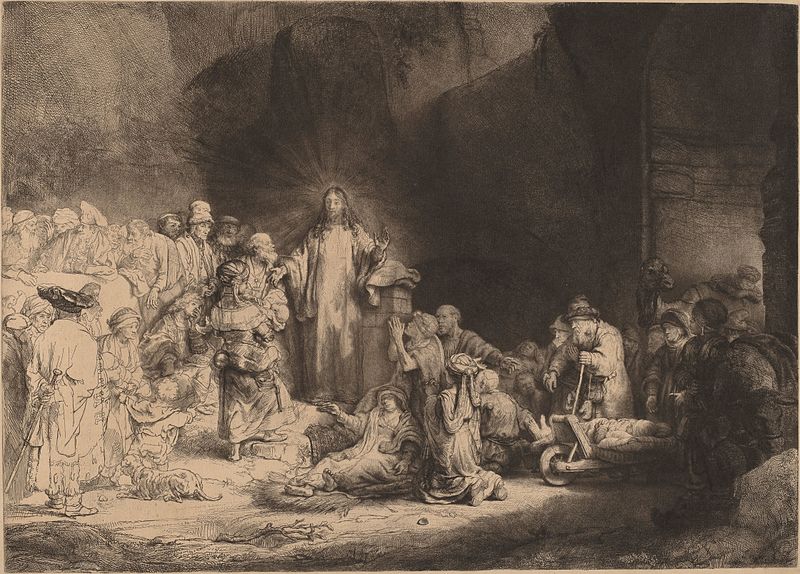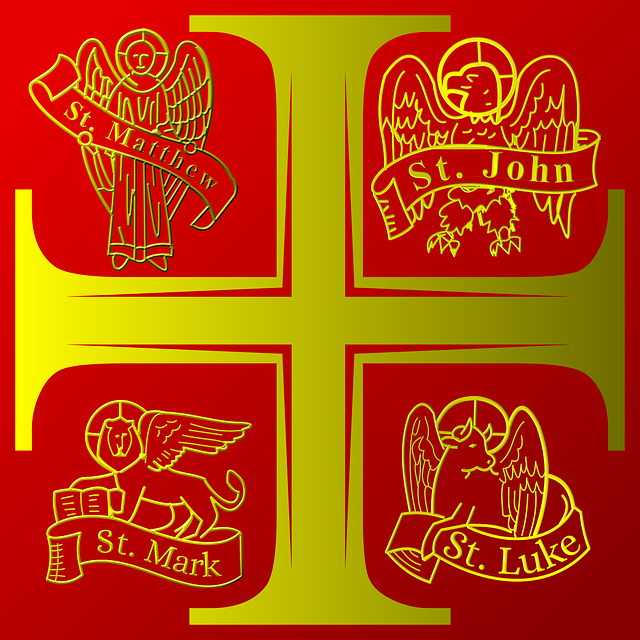Praying as a family is hard. Lots of opinions to manage, not so much time, and it can seem like just one more thing to add to your list of parental challenges.
All of us who are parents know that Jesus told his disciples to pray.
We are his disciples.
Therefore, we should teach our children to pray too–if we want them to be Jesus’ disciples.
When we start to think about the wealth of ways to pray that are all part of Catholic spirituality, not to mention the latest and greatest suggestions we can find on the internet and social media, it can seem overwhelming. We start off already feeling like we’re not doing it right, not doing it well enough, or not trying hard enough. I shared a few years ago, how I mostly dislike family prayer time (!!).
So here’s a suggestion that sounds hard, but is actually a freeing framework.
I recommend making the Liturgy of the Hours framework the structure for at least one family prayer time.
Background Note: For our family, in this phase of life, we pray together for an extended (meaning more than just the length of praying before a meal) time once a day.
First, what is the Liturgy of the Hours (also called the “Divine Office”)?
The Liturgy of the Hours is the public, liturgical prayer of the Church. While there are many wonderful devotions (i.e. rosary, chaplets, etc.) from across the world and centuries of our Catholic faith, only the Liturgy of the Hours is the Church’s liturgy.
So why not use the framework of the public, liturgical prayer of the Church for your domestic church?
If your family has multiple prayer sessions a day–great, make one for the rosary, angelus, or whatever. But, if you only have one family prayer time, I’d say why not derive it from the structure of the Liturgy of the Hours?
By using the Liturgy of the Hours as inspiration, you’re exposing your children to the largest, broadest from of prayer outside of Mass in the Church. You’re exposing your children to a form of prayer that flows from our Jewish spiritual heritage–the way Jesus and his first followers prayed as Jews. You’re exposing your children to a form of prayer that extends beyond the visible bounds of the Church to many of our Protestant brothers and sisters, as well as our Eastern Orthodox brothers and sisters in the Body of Christ.
As Bishop Robert Barron’s Word on Fire ministry summarizes:
[The Liturgy of the Hours is] The Church’s official prayer, and the highest form of prayer after the Mass. It is an ancient, structured way of praying Scripture throughout the day, focusing especially on the Psalms. It hearkens back to the Jewish custom of praying at fixed hours, a practice continued by the early Church.
My take as a parent? The Liturgy of the Hours is the prayer of the Church. And so if it’s good enough for the universal Church 😉 well, it’s probably good enough for us.
In the General Instruction of the Liturgy of the Hours, the Church even encourages us to use the Liturgy of the Hours as a family, noting:
“it is desirable that the family, the domestic sanctuary of the Church, should not only pray together to God but should also celebrate some parts of the Liturgy of the Hours as occasion offers, so as to enter more deeply into the life of the Church.”
General Instructions, para. 27
And, as much as my own personal, quiet prayer time feels a whole lot more “prayerful” than our family time of prayer, the Church is there to encourage us, pointing out the goodness of trying to pray together:
“Celebration in common reveals more clearly the ecclesial nature of the Liturgy of the Hours; it makes for the active participation of all, each in his own role, by means of acclamations, dialogue, alternating psalmody and similar elements, and allows greater scope to variety of expression. Hence, whenever it is possible to have celebration in common, with the faithful present and actively sharing in it, this kind of celebration is to be preferred to one that is individual and as it were private”
General Instructions, para. 33
So, there you go–the active participation and variety of expressions present in your family’s communal celebration derived from the Liturgy of the Hours is “preferred” to an individual/private celebration as it somehow, mysteriously reveals the “ecclesial nature” (meaning that reality of each of us being called out by God into the Body of Christ, the Church) of prayer. The mess of our children interrupting, picking up Legos during prayer time, and constantly distracting me reveals the true nature of the Liturgy of the Hours more than me praying part of the Liturgy of the Hours alone. [Which is kind of a mind blowing thought worth my prayerful contemplation in and of itself!]
What to know about using the Liturgy of the Hours as a framework for family prayer?
First, look at the structure and customize it for your family.
This is the key. This is what makes it realistic, not impossible. Don’t pray the entire Liturgy of the Hours as a family. Don’t even pray the entirety of one of the daily parts at first (i.e. the entire Evening Prayer/Vespers). Whittle it down to the right size for your family in this season of life. This is okay. You’re not breaking any rules. Remember, the General Instruction of the Liturgy of the Hours suggests we pray, “some parts of the Liturgy of the Hours as occasion offers.” Because as lay people, we are not “mandated” as some clergy are, to pray the Liturgy of the Hours, “some parts” is up to you.
We as families are welcome to derive and adapt the framework in a way that works best for our homes.
Pope Paul VI’s 1970 Apostolic Constitution Laudis Canticum explains:
The Office has been drawn up and arranged in such a way that not only clergy but also religious and indeed laity may participate in it, since it is the prayer of the whole people of God. People of different callings and circumstances, with their individual needs, were kept in mind and a variety of ways of celebrating the office has been provided, by means of which the prayer can be adapted to suit the way of life and vocation of different groups dedicated to the Liturgy of the Hours.
Pope Paul VI emphsizes the relevance for the laity again in his summary, stating plainly:
“the Liturgy of the Hours is recommended to all the faithful, including those who are not bound by law to their recitation”
In summary? Choose “some parts” and adapt from what the Liturgy of the Hours offers in a way that works for your family.
For us, how we use the Liturgy of the Hours framework varies for throughout the year (over the years as children grow into different ages and stages), and even on different evenings depending on how much time we have.
Two Suggestions on Where to Start:
If you’d want to start with a naturally short part of the daily Liturgy of the Hours, and not have to think much about how to shorten it in adaptation for your family, I’d recommend the Invitatory.
The Invitatory goes like this:
Leader: Lord, open my lips.
All Reply: And my mouth will proclaim your praise. [From Psalm 51]
This is a great spot to adapt and emphasize the word “praise” with, “let us now praise the Lord” and offer a song suitable to your family. [Many kids like songs! A song also makes a simple element for children to take turns picking since ownership certainly helps all of us feel more engaged in any activity, prayer included].
Then proceed on as usual (General Instructions, para. 34-36) with an antiphon (a short phrase or verse provided for that day or season).
In the family context, we’ll often stick with a single antiphon for a liturgical season, week, or month. Kids, especially pre-readers, are often very open to things that are ripe for natural memorization. Unlike our adult minds (which often crave novelty!) children often enjoy the familiar (i.e. consider how often a child will ask an adult to repeat reading the same book). This natural memorization helps fill your children’s minds with the words of the Church, which then meld with their own as they pray individually later that day or later in life as they grow!
Then comes the psalm of the day. The psalm is traditionally Psalm 95, 100, 67, or 24. You could rotate daily, weekly, etc.
During the invitatory the psalm is interspersed with the antiphon (like in music–the psalm verses are like the “verses” of a song, and the antiphon is like the “refrain” of the song).
This provides an opportunity for any “readers” among your kids to alternate reading the verses of the psalm, while all (including younger, pre-readers) can recite the antiphon between the verses.
Then close with the traditional ending of “Glory to the Father, and to the Son…” and a sign of the cross.
Voila, you’ve prayed the official prayer of the Church without even subtracting anything! (And maybe, you even added a song of praise).
My second suggestion on where to start is to take either morning or evening prayer, and choose elements from those frameworks (which are nearly identical in form) for your family.
As the General Instruction of the Liturgy of the Hours explains:
“In keeping with the ancient tradition of the universal Church, Morning and Evening Prayer form a double hinge of the daily Office and are therefore to be considered the principal Hours and celebrated as such.”
para. 37
Glancing quickly at a real example of Morning or Evening Prayer is the best way to get a sense of what those framework elements to choose from are. Universalis.com is one of the most enduring, free Liturgy of the Hours websites, so check it out: https://universalis.com/
The framework elements of the Liturgy of the Hours are:
Introduction
Hymn (aka a song)
Psalm (plus Antiphon/Prayer) #1
Psalm (plus Antiphon/Prayer) #2
Psalm (plus Antiphon/Prayer) #3
Scripture Reading
Optional Homily (ref. General Instructions, para. 47)
Silence
Responsory [Leader and All Respond short lines]
Gospel Canticle
Intercessions
Lord’s Prayer
Closing
For our family (currently 4 kids ages 10 and younger) the we choose from that framework in this way:
- Introduction [easily memorized, call and response]
- Hymn/Song
- Scripture Reading [this could be a Psalm, but for our kids, we only choose one passage so that we can focus in on that. If your family has the attention to dwell on both a Psalm and other Scripture reading, great! We don’t right now 🙂 and that’s okay!]
- “Homily” / Reflection / Response → aka when we talk about what we just heard in the Scripture passage
- Responsory [we use the same one every time so that we know it by heart]
- *Sometimes* a sung version of a Gospel Canticle (we tend to do this in Advent and Christmas because the Gospel Canticles connect easily to those seasons)
- Combination of Intercessions, Lord’s Prayer, and/or prayer in our own words.
- Closing
This particular type of adaptation takes no specific book other than having a Bible, because we have memorized over time our introduction, responsory, and closing.
Sometimes we do use books that offer us more variety than what we’ve memorized, our school-aged kids especially like when they can use their reading skills as we all read (alternating half of the group for each verse of a psalm).
There are lots of other combinations and adaptations you could do! If your family is musical, pick some musical settings of psalms to learn/use. If you have a particular book of the Bible you aim to read through, substitute it for the given Scripture reading of the day, etc.
The beauty of praying the official prayer of the Church is the reality that the Chruch is the Mystical Body of Christ.
Around the world, there are clergy, some religious orders, and other lay people who are praying every part of the Liturgy of the Hours–a sign of praying without ceasing. Whatever small or large portion you choose as a family, you are joined to this Mystical Body of Christ in a special way through the Liturgy of the Hours. Anything you feel might be “lacking” in your prayer is filled in by others, and your family is at the same time, filling up the Body of Christ in your own unique and imperfect way.
Following the Second Vatican Council, Pope Paul VI expressed this hope in his Apostolic Constitution Laudis Canticum:
Now that the prayer of Holy Church has been reformed and entirely revised in keeping with its very ancient tradition and in the light of the needs of our day, it is to be hoped above all that the Liturgy of the Hours may pervade and penetrate the whole of Christian prayer, giving it life, direction, and expression and effectively nourishing the spiritual life of the people of God.
Has the Liturgy of the Hours made our family prayer time awesome, perfect, peaceful, and serene?
No.
We’re still a family praying at our kitchen table or on the rug in our older children’s bedroom, giving “the look” then their hards start to wander to toys, telling kids not to interrupt or kick each other, debating whether or not we should whisk the preschooler off to bed to avoid meltdown-level-crankiness, and holding a baby.
But, I have the confidence of knowing that we are forming our children as disciples of Jesus in a style similar to how Jesus formed disciples. By inviting them to follow along, to do, and participate (in a small way) in the “praying without ceasing” of God’s People. We rarely utter the phrase “Liturgy of the Hours” or “Divine Office.” They just know it as, “it’s time to pray together.” Someday, I hope they do learn of the existance of the entire Liturgy of the Hours, and realize that the simple phrases, patterns, and rhtyhms of prayer they learned as small children were a part of something much bigger–something that spans millenia, continents, and “In fact […] is the prayer of the Church with Christ and to Christ” (General Instructions, para. 2).

 The
The 

 The reading of the Gospel is “the high point of the Liturgy of the Word,”
The reading of the Gospel is “the high point of the Liturgy of the Word,”